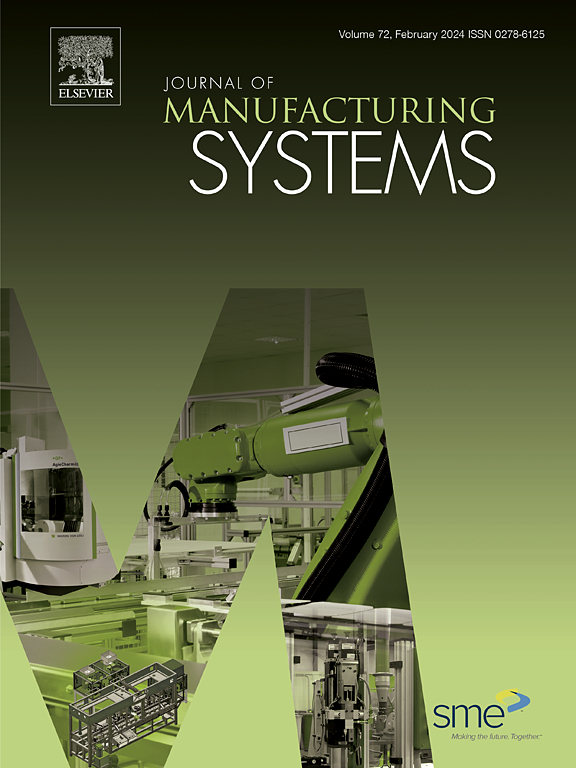A generic digital twin model construction strategy for cross-field implementations with comprehensiveness, operability and scalability
IF 12.2
1区 工程技术
Q1 ENGINEERING, INDUSTRIAL
引用次数: 0
Abstract
In recent years, the prominence of Digital Twins as pivotal tools in digitization and intelligence has sparked widespread interest. However, the diversity of Digital Twin applications has led to a plethora of evolving technologies, standards, and building methods. These varying terms and frequent incompatibilities necessitate a unified approach to characterize and craft Digital Twin models. This endeavor aims not only to streamline construction processes but also to ensure the reusability and collaboration of Digital Twin models across diverse scenarios. This work proposes Digital twin model building strategy (DTBS), deriving four key processes for constructing digital twin models from the perspective of application scenarios: based on physical entities, twin service requirements, physical data, and entity requirements. Subsequently, by defining the application scenarios and employing suitable strategies, the building of digital twin models is accomplished. The DTBS serves as the core strategy for the building of digital twin models, guiding the complete construction process of digital twin models. The DTBS aims to achieve three objectives: comprehensiveness (encompassing all stages of digital twin model building), operability (with low thresholds for researchers and practitioners), and scalability (encompassing not just one scenario, but multiple domains). Additionally, through case studies, the effectiveness of the Digital twin model building strategy in practical engineering contexts is expounded upon. This strategy's strength lies in its ability to maintain scalability while also demonstrating comprehensiveness and operability.
一种通用的跨领域实现数字孪生模型构建策略,具有全面性、可操作性和可扩展性
近年来,数字孪生作为数字化和智能化的关键工具引起了广泛的关注。然而,数字孪生应用的多样性导致了大量不断发展的技术、标准和构建方法。这些不同的术语和频繁的不兼容需要一个统一的方法来表征和制作数字孪生模型。这项工作不仅旨在简化构建过程,而且还确保数字孪生模型在不同场景中的可重用性和协作性。本文提出了数字孪生模型构建策略(DTBS),从应用场景的角度推导了构建数字孪生模型的四个关键流程:基于物理实体、基于孪生服务需求、基于物理数据和实体需求。然后,通过定义应用场景和采用合适的策略,完成数字孪生模型的构建。DTBS是数字孪生模型构建的核心战略,指导数字孪生模型的完整构建过程。DTBS旨在实现三个目标:全面性(包括数字孪生模型构建的所有阶段)、可操作性(对研究人员和实践者具有较低的门槛)和可扩展性(不仅包括一个场景,而且包括多个领域)。此外,通过案例分析,阐述了数字孪生模型构建策略在实际工程环境中的有效性。该策略的优势在于它能够在保持可伸缩性的同时展示全面性和可操作性。
本文章由计算机程序翻译,如有差异,请以英文原文为准。
求助全文
约1分钟内获得全文
求助全文
来源期刊

Journal of Manufacturing Systems
工程技术-工程:工业
CiteScore
23.30
自引率
13.20%
发文量
216
审稿时长
25 days
期刊介绍:
The Journal of Manufacturing Systems is dedicated to showcasing cutting-edge fundamental and applied research in manufacturing at the systems level. Encompassing products, equipment, people, information, control, and support functions, manufacturing systems play a pivotal role in the economical and competitive development, production, delivery, and total lifecycle of products, meeting market and societal needs.
With a commitment to publishing archival scholarly literature, the journal strives to advance the state of the art in manufacturing systems and foster innovation in crafting efficient, robust, and sustainable manufacturing systems. The focus extends from equipment-level considerations to the broader scope of the extended enterprise. The Journal welcomes research addressing challenges across various scales, including nano, micro, and macro-scale manufacturing, and spanning diverse sectors such as aerospace, automotive, energy, and medical device manufacturing.
 求助内容:
求助内容: 应助结果提醒方式:
应助结果提醒方式:


